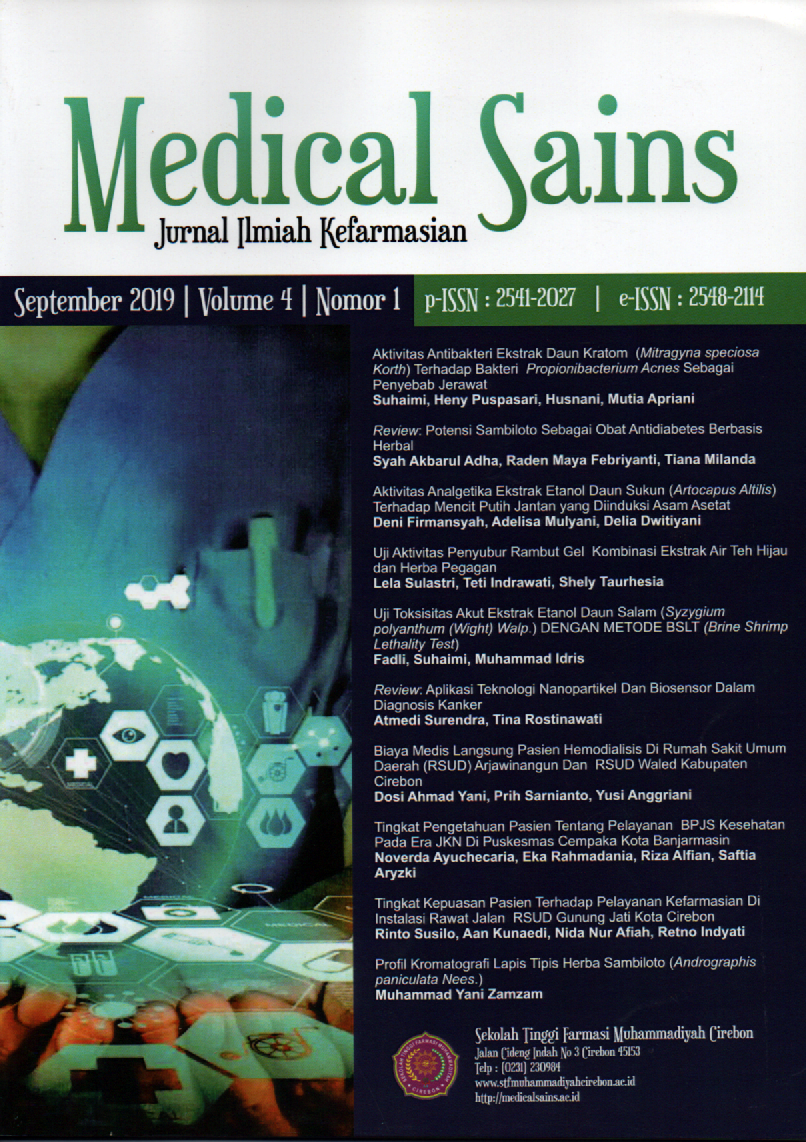UJI TOKSISITAS AKUT EKSTRAK ETANOL DAUN SALAM (Syzygium polyanthum (Wight) Walp.) DENGAN METODE BSLT (Brine Shrimp Lethality Test)
Main Article Content
Abstract
Salam (Syzygium polyanthum (Wight) Walp.) merupakan tanaman yang berasal dari suku Myrtaceae. Penelitian ini bertujuan untuk mengetahui potensi toksisitas akut ekstrak etanol daun salam terhadap larva Artemia salina Leach dengan metode BSLT (Brine Shrimp Lethality Test) yang ditunjukkan dengan nilai LC50.Penelitian ini menggunakan 180 ekor larva Artemia salina Leach yang dibagi menjadi 6 kelompok dengan 1 kelompok kontrol dan 5 kelompok seri konsentrasi ekstrak sebesar 1000, 750, 500, 250, 100 μg / mL yang masing-masing kelompok terdiri dari 10 ekor larva dengan replikasi 3 kali. NilaiLC50dihitung berdasarkan persentasekematian larva yang dianalisis menggunakan metode probit.Hasil penelitian menunjukkan nilai LC50 dari ekstrak etanol daun salam sebesar 347,2162 μg / mL. Hal ini menunjukkanbahwaekstrak etanoldaun salamberpotensitoksikterhadap larva ArtemiasalinaLeachdengan nilai LC50< 1000 μg / mL.
Article Details
Issue
Section
Pharmacology
